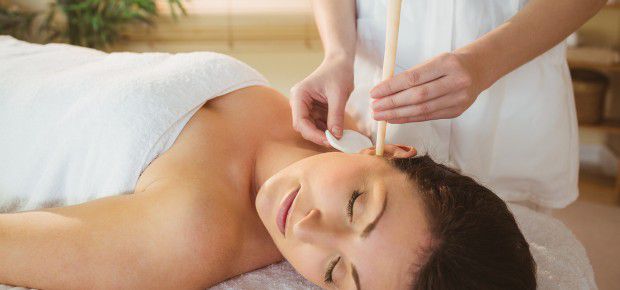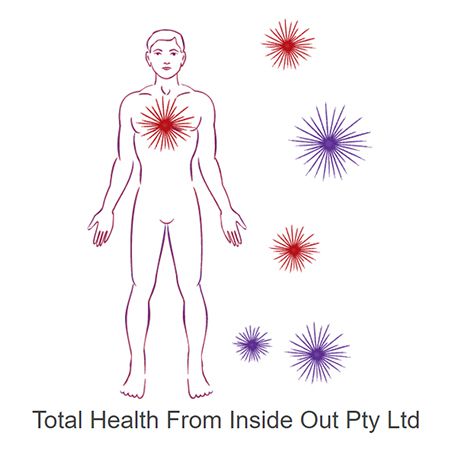
Ear candling has gained traction in Australia’s wellness scene, often promoted as a natural way to remove earwax, relieve sinus pressure, and support general ear health. You’ll find it mentioned in beauty salons, holistic clinics, and even at home among those exploring alternative therapies. Its gentle, ritual-like process has made it popular with people looking for non-invasive remedies.
But does ear candling actually deliver on its promises? While the stories sound convincing, health experts have raised serious questions about its effectiveness and safety. Before you book your next session, it’s worth unpacking what the evidence really says. In this blog, we’ll break down the facts.
What is ear candling?
Ear candling is a popular alternative therapy often promoted as a natural way to remove earwax, release pressure, and even detoxify the body. It’s commonly offered in wellness clinics, beauty salons, and some home-based setups across Australia. While the experience may seem gentle and therapeutic, the method itself and its safety have been questioned by medical experts.
The method
The procedure involves using a long, hollow candle made from cloth coated in beeswax or paraffin. Here’s how a typical session works:
-
The person lies on their side with one ear facing up
-
The tapered end of the candle is inserted into the ear canal
-
The wider end is lit, creating a small open flame
-
The candle burns for around 10 to 15 minutes
-
Ash and melted wax are caught using a protective plate or foil
Supporters claim the heat creates a gentle suction effect, drawing out earwax, bacteria, and other “toxins” from the ear. Some also believe it can relieve sinus pressure or headaches.
After the session, the remaining candle is often cut open to reveal a dark residue, which is said to be proof of what was removed. However, studies show this residue usually comes from the candle itself, not the ear.
Where did it come from?
Ear candling is widely marketed as an ancient Hopi Native American practice, but there is no historical evidence to support this. According to Sugaura, the Hopi name has been used in branding, but there is no trace of ear candling in actual Hopi traditions.
Its true origin remains unclear, with most cultural associations added for commercial appeal rather than based on documented history.
If you're interested in how energy-based therapies compare in terms of research, explore what science says about Reiki here.
What people say it does
Despite concerns from the medical community, ear candling continues to hold appeal within wellness-focused spaces, especially among those exploring alternative or natural approaches to health.
In Australia, it’s not uncommon to see ear candling offered in beauty salons, massage clinics, or listed as part of a holistic treatment package. While the experience may vary from person to person, many users are drawn in by word-of-mouth reviews, anecdotal stories, and the ritualistic comfort of the treatment itself.
Here are some of the most commonly reported benefits:
-
Removing built-up earwax: One of the main reasons people try ear candling is the belief that it helps remove stubborn wax. It’s often described as a gentle and more natural method compared to syringing or over-the-counter ear drops. After a session, users often point to the brown residue inside the candle as proof that wax and impurities were extracted.
-
Clearing sinus pressure: Many claim the rising warmth from the candle can help open up nasal passages and reduce sinus pressure, particularly during cold or allergy season. Some feel temporary relief from facial tension and stuffiness.
-
Improving hearing: A few people report enhanced hearing sensitivity after treatment, attributing it to the supposed clearing of wax or blockages.
-
Reducing headaches and tension: The calm setting, combined with warmth and stillness, is said to promote deep relaxation, which can ease tension-related headaches or migraines.
-
Enhancing mental clarity: Others say they leave the session feeling lighter, clearer, or more grounded—crediting the effect to a perceived energy shift or relief from physical pressure.
These benefits, however, remain unverified in clinical settings and should be considered subjective experiences rather than guaranteed outcomes.
For more on natural practices with evidence-backed benefits, learn how yoga and meditation can help reverse the effects of stress.
What the science says
Although ear candling is popular in wellness communities, research has not supported its safety or effectiveness. Clinical studies and expert reviews consistently conclude that the practice does not work as claimed and may even pose risks.
Clinical findings
A detailed study published in the Canadian Family Physician Journal (PMC) found no evidence that ear candling creates any measurable suction strong enough to remove earwax. Instead, the study observed that the waxy residue found inside the used candle was not earwax, but simply melted candle material.
Further reviews, including one from Medical News Today, confirm that the process is ineffective and potentially harmful. In some cases, it has been shown to push earwax deeper into the canal rather than extracting it, which can worsen blockages and impact hearing.
Additional health reports compiled by EBSCO Health also list several common risks associated with ear candling:
-
Burns to the ear, face, or scalp
-
Blockage from melted candle wax
-
Punctured eardrums
-
Temporary hearing loss
-
Secondary infections due to irritation or injury
Overall, the clinical consensus is clear: there is no scientific support for the claims made by ear candling advocates, and the risks outweigh any perceived benefit.
Health authorities’ warnings
In Australia, the Therapeutic Goods Administration (TGA) does not regulate ear candles as medical devices, meaning they are not officially approved for any therapeutic use.
Consumer advocacy group CHOICE Australia has also warned against the practice, stating that it offers no proven benefit and carries clear safety risks.
ENT specialists and GPs across Australia commonly advise against ear candling. Many stress that there are safer, medically recognised ways to manage earwax or sinus issues, such as ear irrigation, microsuction, or the use of pharmacy-grade ear drops.
Curious about broader wellness habits? Check out these 10 practical steps to support a healthier lifestyle in Australia.
Safer, evidence-based alternatives for ear health
When it comes to caring for your ears, relying on methods that are supported by science and approved by health professionals is always the safest choice. Ear candling may feel appealing, but the risks outweigh the perceived benefits.
Fortunately, there are several effective, evidence-based alternatives available in Australia that can help manage earwax, sinus issues, and general ear discomfort without putting your hearing at risk.
See a GP or ENT
For proper diagnosis and treatment of ear-related concerns, it’s best to consult a general practitioner or an ENT (ear, nose, and throat) specialist. These healthcare providers use safe, clinically proven techniques such as:
-
Microsuction: A precise and gentle suction method that removes earwax under direct visual guidance using a microscope or special lens.
-
Irrigation: A controlled flushing of the ear canal using warm water or saline to loosen and remove wax.
These procedures are commonly used in Australian clinics and are often covered by Medicare when referred by a GP. They’re ideal for anyone experiencing frequent blockages, hearing issues, or discomfort.
If you're looking for a qualified practitioner who supports natural and integrative care, you can browse available professionals on Natural Therapy Pages.
Pharmacy ear drops
For mild to moderate wax build-up, over-the-counter ear drops available in Australian pharmacies are a convenient and safe option. These drops work by softening the wax, making it easier for it to move out naturally or be removed by a healthcare provider.
-
Carbamide peroxide-based drops: Commonly used for loosening stubborn wax.
-
Olive oil-based drops: A gentle, natural solution recommended by many GPs.
Natural methods that are backed by experts
Some natural remedies can also provide relief and support without relying on invasive techniques:
-
Olive oil drops: Soften earwax and ease discomfort.
-
Warm compresses: Help relieve sinus tension and mild ear aches.
-
Steam inhalation: Promotes sinus drainage and eases congestion.
These methods are safe for home use and can complement professional care when needed.
Should you try ear candling? A balanced look
For many, ear candling is appealing because of its calming atmosphere and the ritual itself. The process feels gentle, personal, and offers a moment of stillness something people often seek when dealing with discomfort or stress. It’s easy to see why some walk away feeling relaxed or refreshed, even if the treatment isn’t clinically effective.
However, comfort alone doesn’t make a treatment safe or reliable. Ear candling comes with clear risks:
-
It can push wax deeper rather than removing it.
-
The open flame near the face poses a risk of burns.
-
Melted candle wax can block the ear canal or cause irritation.
-
There is no medical evidence supporting the claimed benefits.
These potential harms outweigh the anecdotal experiences that make it seem helpful. What feels good in the moment may not be helping your ears—and might even make things worse in the long run.
If you’re dealing with ear discomfort, blocked ears, or sinus pressure, it’s always best to start with safe, evidence-backed options. Speaking to a GP or a qualified practitioner ensures that any treatment is suited to your specific condition and won’t cause unintended damage.
In short, while ear candling might look relaxing, safety should come first. Understanding the risks and consulting with a health professional is the smartest approach if your goal is lasting relief and proper care.
Wrapping up
Ear candling may seem like a simple, natural solution—but the reality doesn’t match the claims. While the experience might feel relaxing or comforting, studies show it doesn’t actually remove wax or deliver the detoxifying benefits often promised. In fact, it can lead to burns, blockages, or even ear damage when done incorrectly.
The myth of ear candling has been kept alive by personal stories and marketing, but evidence-based medicine tells a different story. When it comes to ear health, your best option is to choose methods that are safe, proven, and tailored to your needs.
Whether you’re dealing with wax build-up, pressure, or general ear discomfort, it’s important to consult qualified professionals who can offer proper care. Avoid risky home remedies and prioritise treatments that are both gentle and effective.
Looking after your ears? Explore natural therapies and qualified practitioners near you on Natural Therapy Pages. Get support that’s safe, trusted, and backed by real expertise.
Originally published on Jun 11, 2025








